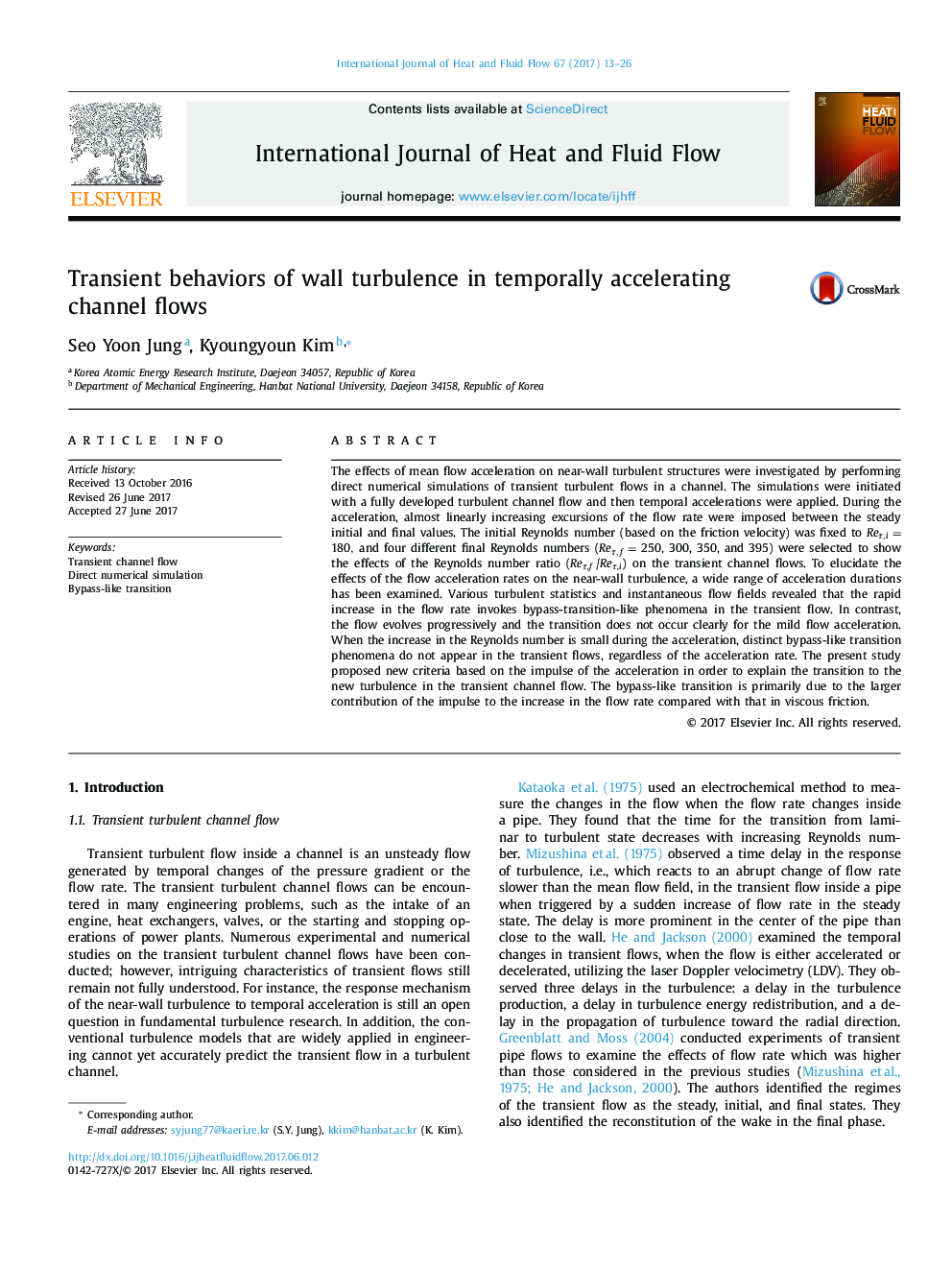| Article ID | Journal | Published Year | Pages | File Type |
|---|---|---|---|---|
| 4993148 | International Journal of Heat and Fluid Flow | 2017 | 14 Pages |
Abstract
The effects of mean flow acceleration on near-wall turbulent structures were investigated by performing direct numerical simulations of transient turbulent flows in a channel. The simulations were initiated with a fully developed turbulent channel flow and then temporal accelerations were applied. During the acceleration, almost linearly increasing excursions of the flow rate were imposed between the steady initial and final values. The initial Reynolds number (based on the friction velocity) was fixed to ReÏ,i=180, and four different final Reynolds numbers (ReÏ,f= 250, 300, 350, and 395) were selected to show the effects of the Reynolds number ratio (ReÏ,f/ReÏ,i) on the transient channel flows. To elucidate the effects of the flow acceleration rates on the near-wall turbulence, a wide range of acceleration durations has been examined. Various turbulent statistics and instantaneous flow fields revealed that the rapid increase in the flow rate invokes bypass-transition-like phenomena in the transient flow. In contrast, the flow evolves progressively and the transition does not occur clearly for the mild flow acceleration. When the increase in the Reynolds number is small during the acceleration, distinct bypass-like transition phenomena do not appear in the transient flows, regardless of the acceleration rate. The present study proposed new criteria based on the impulse of the acceleration in order to explain the transition to the new turbulence in the transient channel flow. The bypass-like transition is primarily due to the larger contribution of the impulse to the increase in the flow rate compared with that in viscous friction.
Keywords
Related Topics
Physical Sciences and Engineering
Chemical Engineering
Fluid Flow and Transfer Processes
Authors
Seo Yoon Jung, Kyoungyoun Kim,
